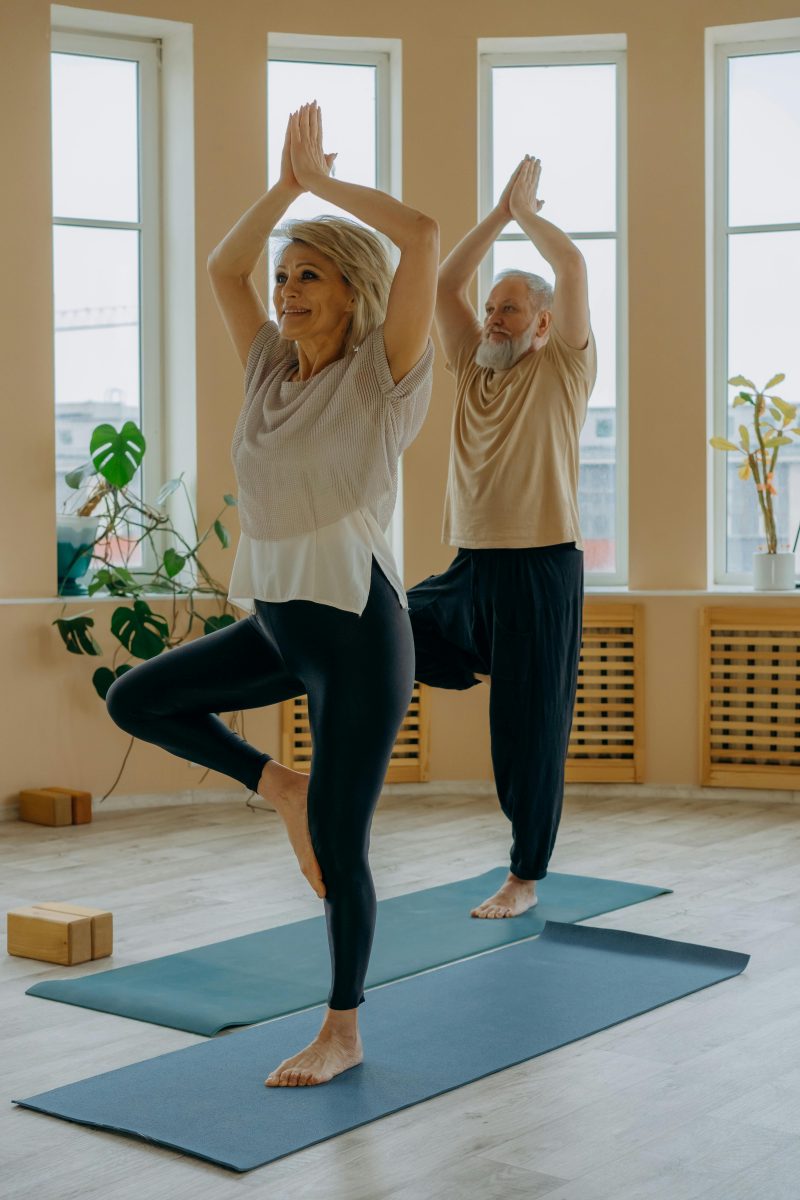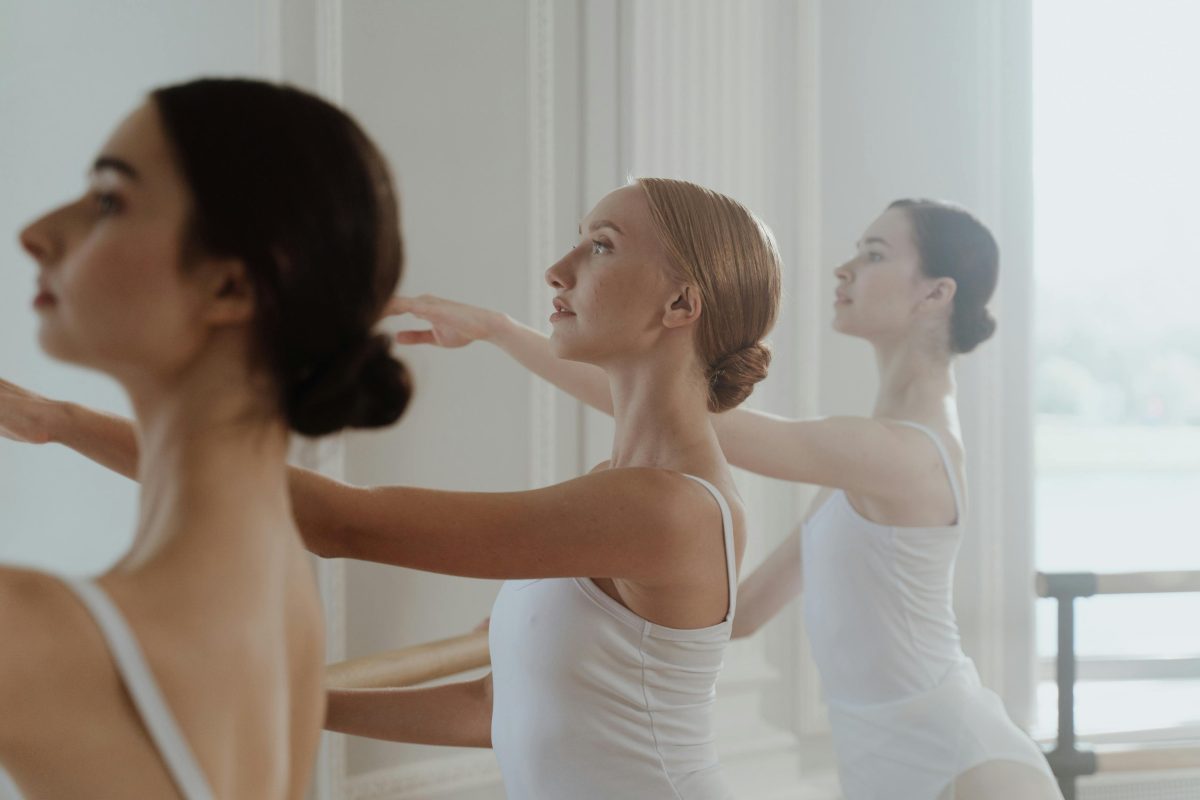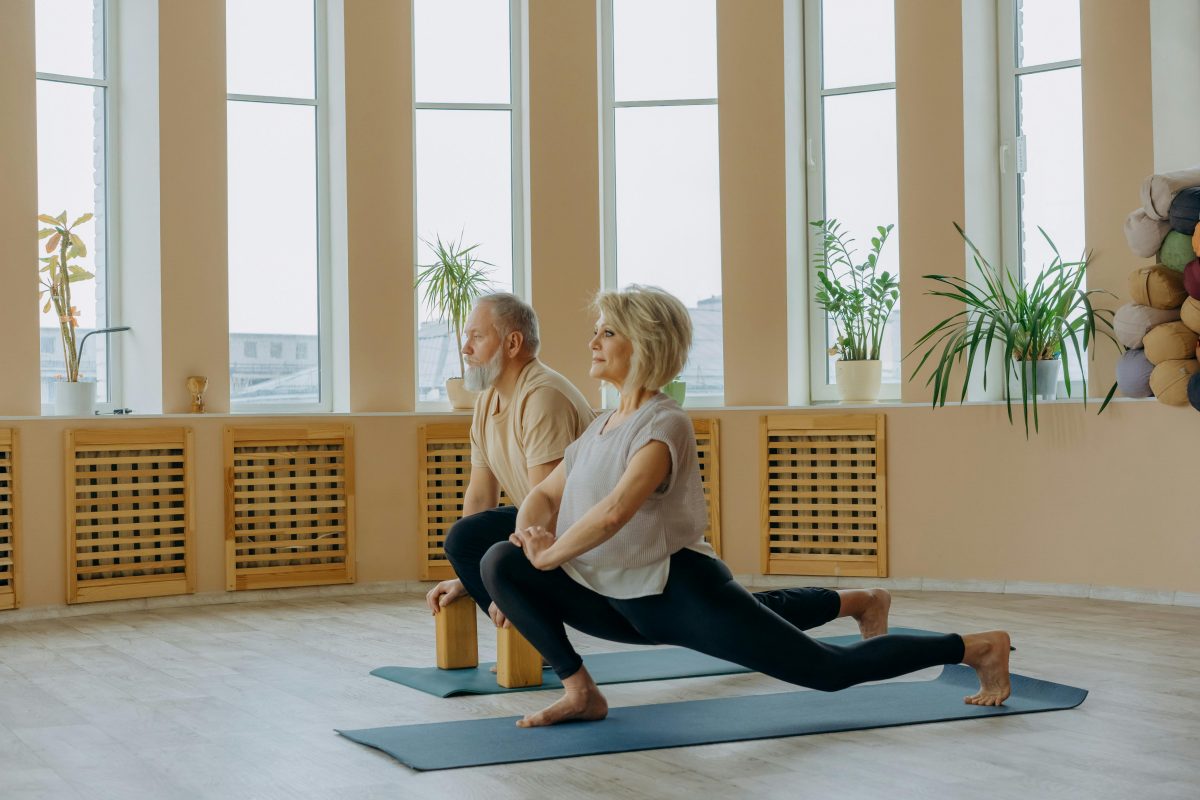Last Updated on: 14th July 2024, 09:04 am
Introduction to Mobility and Flexibility for Seniors

Maintaining mobility and flexibility as we age is not just beneficial; it’s essential. These elements are the cornerstone of a vibrant, active lifestyle beyond our younger years. They pave the way for improved balance, significantly reducing the risk of falls—a common concern among seniors. But the benefits extend further, enhancing the overall quality of life, allowing for more independence and the enjoyment of daily activities without the shadow of physical limitation.
Imagine a life where each step is secure, where the fear of falling doesn’t dictate your movements. This is the promise of prioritizing mobility and flexibility. Through targeted exercises, seniors can reclaim their confidence in motion, ensuring that each day is met with vigor and the joy of unhindered movement. The ripple effect is profound, touching every aspect of life, from the simple pleasure of a walk in the park to the essential ability to perform daily tasks with ease.
Thus, the journey towards improved mobility and flexibility is not just about physical health; it’s about crafting a life filled with more possibilities, more adventures, and more joy. It’s a testament to the enduring strength of the human spirit, proving that age, indeed, is just a number.
Understanding the Difference Between Mobility and Flexibility

Mobility and flexibility, though often used interchangeably, hold distinct meanings in the realm of physical health. Mobility refers to the ability to move freely and easily, encompassing not just the muscles but also the joints, ligaments, and tendons that facilitate movement. It’s about how well your body can move through its intended range without restriction.
Flexibility, on the other hand, zeroes in on the range of motion available at a joint. It’s the stretch of the muscle and the ability of a joint to move through its complete spectrum of movements. This quality is crucial for performing daily activities with grace and ease.
Together, mobility and flexibility form a dynamic duo that contributes significantly to overall physical health. They are the unsung heroes behind our ability to perform everyday tasks, engage in physical activities, and enjoy a quality of life unmarred by physical limitations. By focusing on both aspects, seniors can enhance their balance, reduce the risk of falls, and maintain independence. The journey towards improved mobility and flexibility is not merely about physical well-being; it’s a pathway to a life brimming with potential, enabling seniors to embrace each day with confidence and joy.
Embracing exercises that enhance both mobility and flexibility can transform the way seniors live, making every movement a testament to their enduring strength and vitality. It’s not just about adding years to life, but adding life to years, ensuring that every moment is lived to its fullest potential.
Assessing Your Current Mobility and Flexibility Levels

Knowing your starting point is crucial in any journey, especially when it comes to improving mobility and flexibility. It sets the stage for a tailored approach, ensuring exercises are both effective and safe. Without this baseline, progress can be hard to measure, and the risk of injury increases.
- A sit-and-reach test, for instance, helps gauge lower back and hamstring flexibility.
- The shoulder mobility test, where you reach one arm over your shoulder and the other up your back to touch fingers, reveals a lot about upper body flexibility.
These assessments, easily done at home, serve as a guide to understanding your body’s capabilities and limitations.
However, it’s not all DIY. There are moments when consulting with a healthcare professional becomes imperative. If you experience pain during these assessments or have a history of joint or muscle issues, professional guidance can ensure you embark on this journey safely. A physical therapist or a certified fitness trainer can offer personalized assessments and craft a regimen that addresses your specific needs, setting you on a path to improved mobility and flexibility with confidence.
Embracing this initial step of assessment not only illuminates the path forward but also safeguards against potential setbacks, making your journey towards enhanced mobility and flexibility both rewarding and enjoyable.
Essential Mobility Exercises for Seniors

Embarking on a journey to enhance mobility and flexibility involves incorporating a variety of exercises tailored to the needs of seniors. These exercises are designed not only to improve movement but also to ensure that every day is filled with the joy of unhindered activity.
Walking and Its Variations for Lower Body Mobility
- Walking, a fundamental exercise, stands at the core of improving lower body mobility.
- To add variety, seniors can incorporate different walking styles such as heel-to-toe walks or side steps. These variations challenge the body in unique ways, promoting strength and flexibility in the lower limbs.
Arm Raises and Shoulder Rolls for Upper Body Mobility
- For upper body mobility, arm raises and shoulder rolls are incredibly beneficial.
- By lifting the arms overhead and rolling the shoulders in circular motions, seniors can enhance their range of motion, making daily tasks easier and more comfortable.
Exercises Targeting the Spine and Torso for Core Mobility
- The spine and torso are central to our core mobility, affecting our balance and overall movement.
- Exercises such as gentle twists and seated stretches can significantly improve the flexibility of the spine.
Integrating these exercises into a daily routine can transform the way seniors experience their day-to-day lives. With improved mobility and flexibility, the world opens up with possibilities, allowing for a more active, independent, and joyful lifestyle. The key is consistency and gradually increasing the challenge to keep the body engaged and progressing.
Remember, it’s not about the intensity of the exercise but the regularity and the commitment to enhancing one’s mobility and flexibility. Every step taken towards this goal is a step towards a more vibrant and fulfilling life.
Key Flexibility Exercises for Seniors

Flexibility exercises are a cornerstone of maintaining an active and independent lifestyle in senior years. By focusing on major muscle groups through stretching routines, seniors can significantly enhance their range of motion. These routines, simple yet effective, target the legs, arms, back, and neck, ensuring a comprehensive approach to flexibility.
Stretching Routines for Major Muscle Groups
Beginning with the lower body, stretches such as the seated hamstring stretch and calf stretches improve leg flexibility, crucial for walking and climbing stairs. Moving upwards, arm and shoulder stretches, performed either standing or seated, maintain upper body mobility, essential for tasks like reaching and lifting.
Yoga Poses Beneficial for Seniors
Yoga, with its gentle poses, offers a holistic approach to flexibility and balance. Poses like the Cat-Cow stretch the spine, while the Tree Pose enhances balance. The Warrior series strengthens and stretches simultaneously, making yoga an ideal practice for seniors seeking to improve their flexibility and overall well-being.
Incorporating these exercises into daily routines doesn’t require a significant time commitment. A few minutes each morning or evening can lead to noticeable improvements. The key is consistency and gradually incorporating these exercises into everyday life.
Remember, the journey towards improved flexibility is not a race. It’s about making small, sustainable changes that add up to significant benefits over time. With regular practice, seniors can enjoy a more active, independent, and fulfilling lifestyle, marked by an increased range of motion and reduced risk of falls.
Overcoming Common Barriers to Exercise

Many seniors hesitate to exercise, fearing injury or believing it’s too late to start. However, with proper guidance and modifications, exercise is not only safe but also immensely beneficial at any age. It’s crucial to dispel these fears, understanding that an active lifestyle can significantly enhance one’s golden years.
- Setting Achievable Goals: Start with small victories, like walking a bit further each week or adding an extra stretch to your routine.
- Finding Joyful Activities: Choose exercises that make you happy, such as dance classes or gentle yoga, to make exercise enjoyable.
- Adapting to Limitations: Use chairs for seated exercises, resistance bands instead of weights, and modify exercises to reduce joint strain. Always consult with a healthcare provider for tailored advice.
- Creating Sustainable Habits: Integrate movement into daily tasks, like marching in place while watching TV or doing arm circles while brewing coffee, to build a lifestyle where exercise is natural.
Remember, the journey to improved mobility and flexibility is a personal one. It’s about finding what works for you, embracing the process, and celebrating each step forward. With patience and persistence, exercise can become a cornerstone of a vibrant, independent life.
Implementing a Safe and Effective Routine

Embarking on a journey to enhance mobility and flexibility begins with understanding the importance of warming up and cooling down. These bookends to your exercise routine are not mere formalities; they are essential practices that prepare your body for activity and aid in recovery afterward.
- Warming Up: A proper warm-up increases cardiovascular system activity, blood flow to muscles, and body temperature, making muscles more pliable.
- Cooling Down: Cooling down helps gradually bring your heart rate back to resting state and prevents stiffness, promoting smoother recovery.
- Creating a Balanced Routine: Incorporate both mobility and flexibility exercises for a holistic approach to physical well-being.
- Setting Realistic Goals: Use SMART goals (Specific, Measurable, Attainable, Relevant, Time-bound) to give direction and motivation.
- Tracking Progress: Keep a journal, use an app, or simply note down achievements to see improvements and adjust routines as needed.
Remember, the path to improved mobility and flexibility is a marathon, not a sprint. Patience, consistency, and a well-structured routine are your best allies. With each step forward, you’re not just moving towards your physical goals but also paving the way for a more active, independent, and fulfilling lifestyle.
In Closing
Age is but a number in the quest for mobility and flexibility. This journey enriches life with resilience and joy, blending the challenge of physical health with the reward of unfettered independence. Through a balanced regimen of exercises, seniors can navigate the path from limitation to liberation, embodying strength and vitality at every step. Let’s embrace this transformative pursuit, for it promises a future of boundless potential and enduring well-being.
Mobility and Flexibility Exercises for Seniors FAQs
Yes, many mobility exercises can be performed from a seated position, such as seated leg stretches, chair yoga, and upper body stretches. These exercises are ideal for seniors with limited mobility or those who spend a lot of time sitting. They focus on improving flexibility and circulation while minimizing the risk of injury.
Yes, mobility exercises can significantly improve balance in seniors by strengthening the muscles that support the joints and improving proprioception. Exercises that focus on leg strength, core stability, and coordination, such as standing on one foot or walking heel to toe, are particularly effective. Improved balance reduces the risk of falls, which is crucial for maintaining independence in senior years.
Yes, mobility exercises can help reduce pain in seniors by improving flexibility, strength, and joint function. Regularly engaging in low-impact mobility exercises can alleviate stiffness and reduce discomfort associated with conditions like arthritis. It’s crucial to choose exercises that are appropriate for one’s fitness level and to consult with a healthcare provider if pain persists.
Seniors can ensure safety by starting with low-intensity exercises and gradually increasing intensity as their flexibility and strength improve. It’s also advisable to perform exercises in a safe environment, free from obstacles, and to use chairs or walls for support if needed. Consulting with a physical therapist or fitness professional who can tailor exercises to individual needs and limitations is also beneficial.
Seniors can measure progress by noting improvements in the ease of performing daily activities, increased range of motion, and decreased pain or stiffness. Keeping a journal to track the types of exercises performed, the duration of exercise sessions, and any changes in how exercises feel can also provide tangible evidence of improvement. Additionally, regular assessments with a healthcare or fitness professional can offer professional insights into progress and areas for improvement.
Seniors should aim to perform flexibility exercises at least 2 to 3 times per week. Consistency is key to seeing improvements in flexibility and mobility, and incorporating these exercises into a regular routine can help maintain joint health and muscle elasticity. It’s also important to listen to one’s body and adjust frequency as needed.
Simple mobility exercises for seniors include leg lifts, arm circles, seated twists, and ankle rolls. These exercises can be easily performed at home with minimal equipment, making them accessible for daily practice. They help maintain joint flexibility, improve circulation, and enhance overall mobility.
Gentle stretching routines, such as yoga or Tai Chi, are highly beneficial for seniors looking to improve mobility. These exercises enhance flexibility, balance, and strength without putting too much strain on the body. Regular practice can significantly improve overall movement and reduce the risk of falls.
Mobility exercises focus on improving the range of motion in joints, whereas flexibility exercises aim to lengthen muscles and tendons. Mobility exercises often involve dynamic movements that mimic everyday activities, helping to improve functional movement patterns. In contrast, flexibility exercises are typically static stretches held for a period of time to increase muscle length.
Hydration is crucial for seniors engaging in mobility and flexibility exercises as it helps maintain the elasticity of muscles and joints. Proper hydration ensures that the body functions optimally, aids in the prevention of muscle cramps, and facilitates recovery after exercise. Seniors should drink water before, during, and after exercise to stay hydrated.
Orlando is a all round athlete from Australia, now resident in Germany. His sports of passion of American Football(Offensive line), weight training and indoor rock climbing where he uses his 195cm wing span to his advantage.



